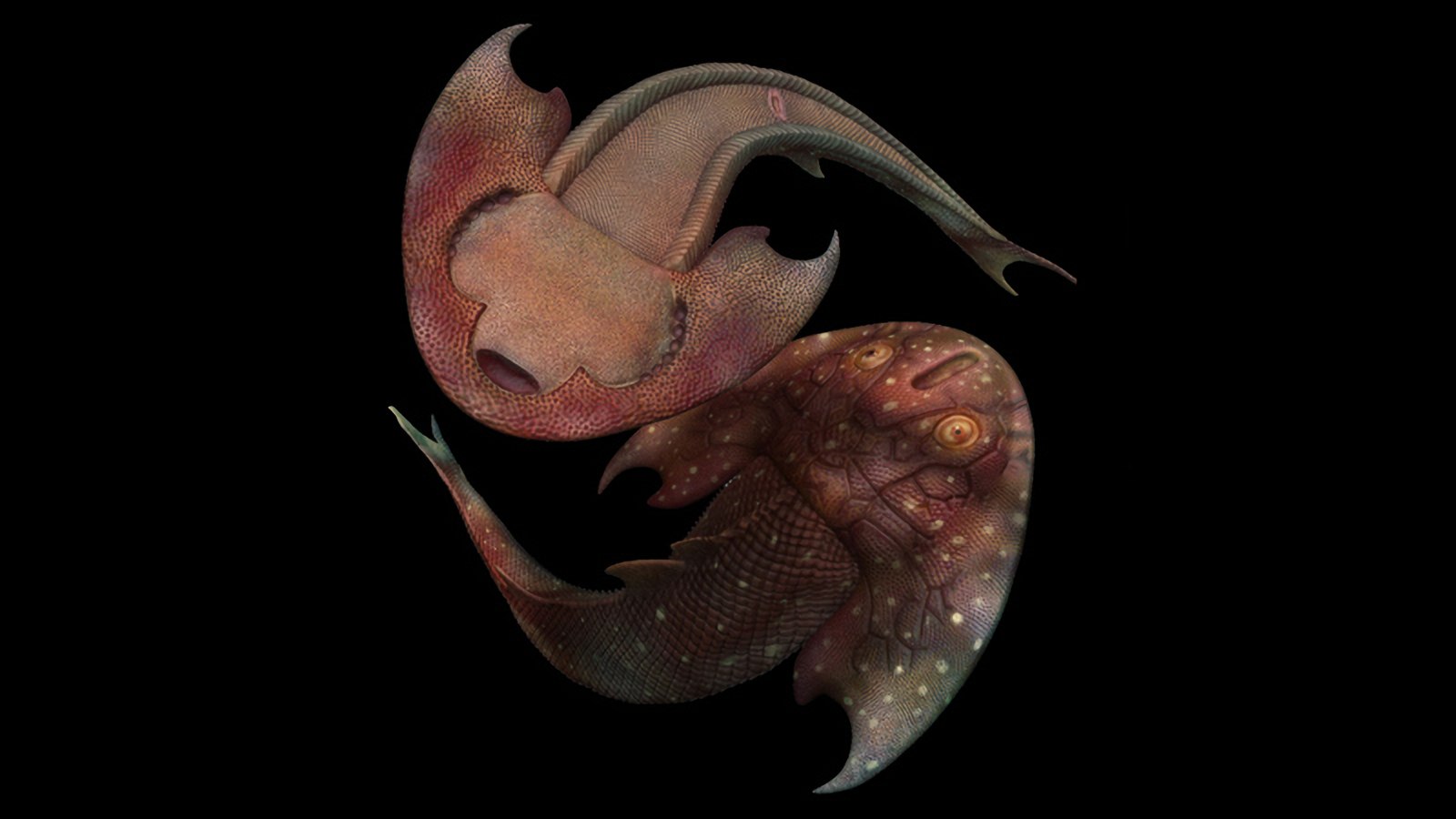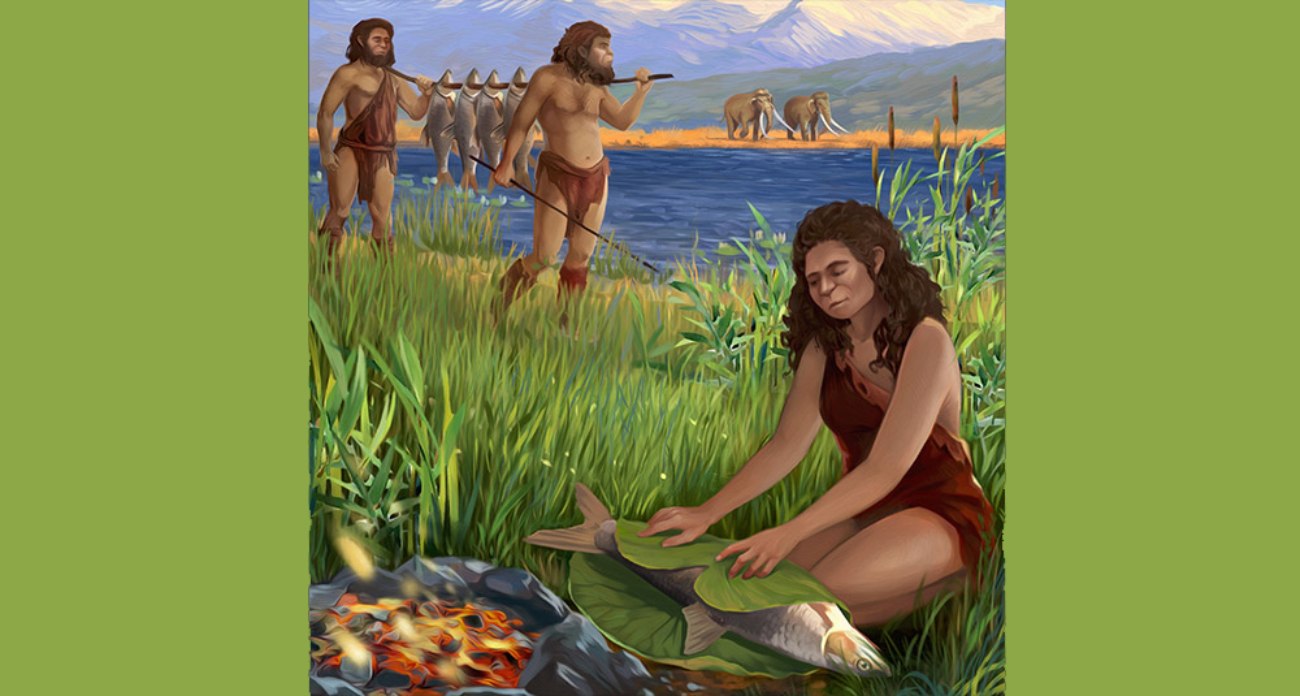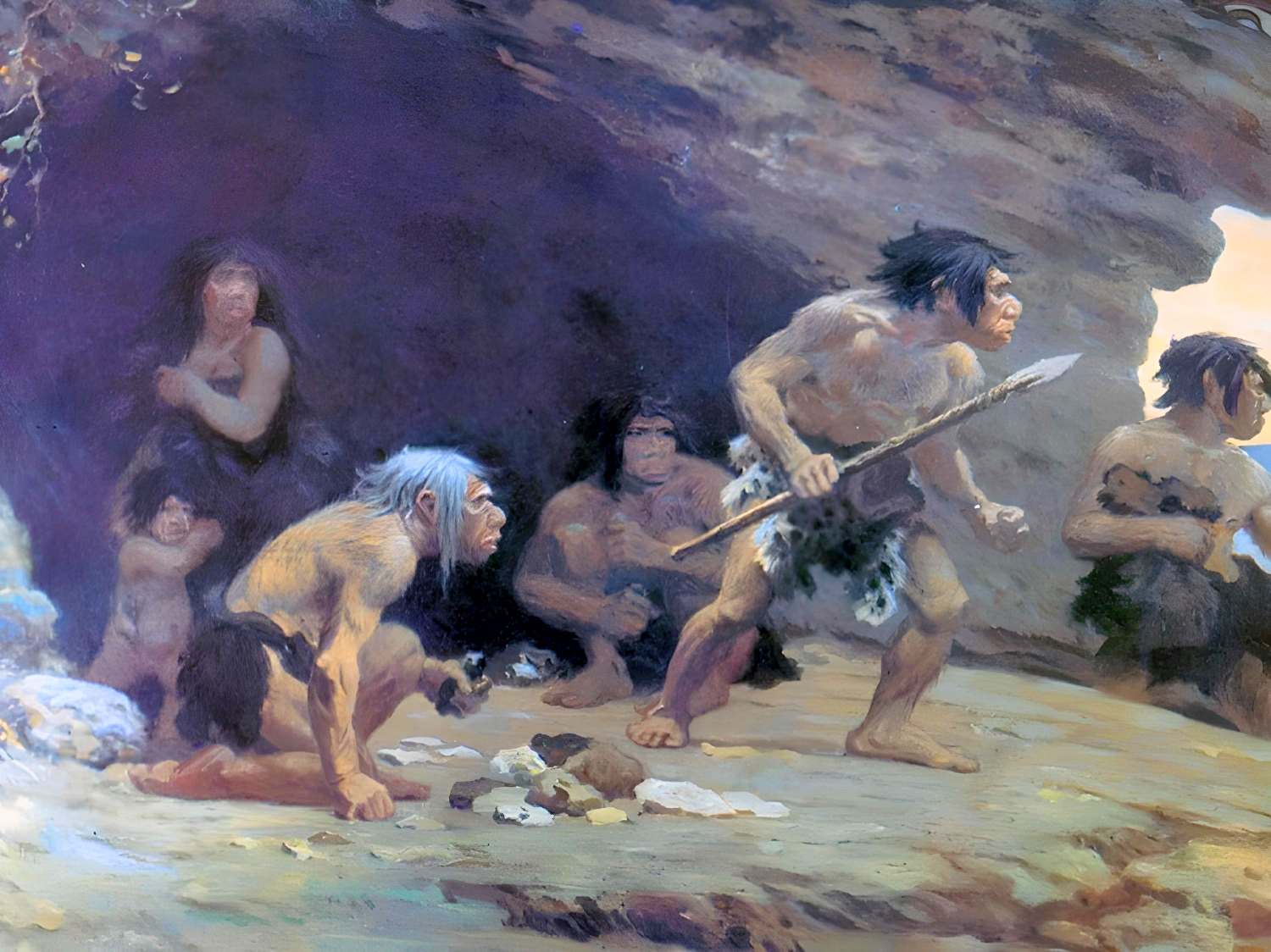In evolutionary terms, the regression or extinction of organs or behaviors that are no longer required might be seen as a step forward. In the shape of coccyxes and similar structures, we humans have relics from our prehistoric past. We still have some prehistoric relics in us. Which pieces of our ancestors still lie dormant inside us, and which will we pass on to future generations?
The wisdom tooth is only one of many annoyances passed down to us from our ancestors. For what purpose do these remnants of the past persist? Is it true that the appendix provides nothing but problems now, or have they evolved in some way to become useful again? Does the way we live inevitably lead to the degeneration of bodily functions that we now take for granted? A trip through time to explore the past and the potential of prehistoric humanity.
The rudiments are a connection to our ancestors
Our previous ancestors did not share our modern conveniences. A hostile environment was rife with hazards, both natural and manmade. Their physical makeup allowed them to weather the storm. The powerful grips and climbing capabilities of their tails allowed early primate-like ancestors to safely seek refuge in the trees. Heavy fur served as insulation. These traits lost their use as evolution pushed toward the modern human and declined, albeit frequently and not totally.
To the concrete jungle, from the treetops

A component of our long-gone ancestors lives on in us even now. Hair evolved from fur, and the tail became the coccyx. These relics of evolution are known as rudiments. They may be found in high concentrations in many different kinds of organisms. The term “rudimentary” refers to a structure that has outlived its usefulness. Their size has shrunk dramatically, as in the case of the wings of kiwis and emus, or they have atrophied, as in the case of blind cavefish.
Still, rudiments need not be totally useless. They may also be advantageous to those who carry them by taking on additional responsibilities. Even though they now live in the water, whales still retain some rudimentary remnants of the pelvic girdle that they used to have when they were terrestrial. They are no longer necessary for the animal’s walking support, but they do provide a vital anchor point for the muscles that are linked to them.
Regressive evolution
Rudiments are witnesses to regressive evolution. Evolutionary novelty isn’t always the best approach to adapting to a new environment. Regression of mature traits may sometimes improve a species’ fitness. As an example of “evolution in reverse,” consider parasites, which have regressed their own body parts in order to specialize in feeding off of their host. For example, lice lack wings, and tapeworms lack intestines.
Both snakes and terrestrial animals have lost limbs or other appendages via a process of regressive evolution. When a trait stops serving a purpose and is no longer affected by stabilizing selection, it undergoes regressive evolution. Using median values to make decisions is an example of stabilizing selection. Birds with wings that are either too huge or too small have trouble flying. Therefore, the medium-sized wings tend to prevail over time. If, however, the wings are forced to lose their flying function due to environmental factors, as in emus, then it is irrelevant how large the wings are because stabilizing selection is no longer at work.
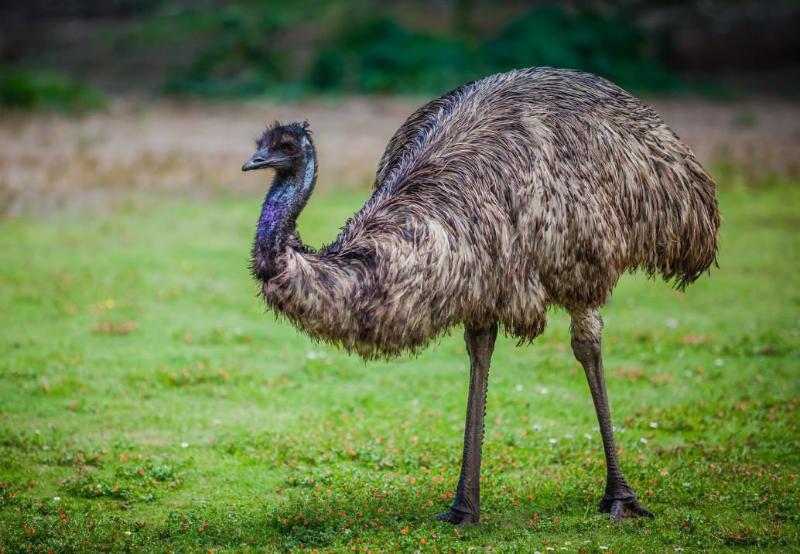
However, the opposite occurs, and the damaged organs begin to atrophy and shrink. During gestation, an embryo expends a lot of energy on developing body components that will be of little benefit to it later in life. Therefore, over time, those people will succeed who are predisposed to do better since they were born with a deformed bodily component. A ratite is the evolved form of a bird species that was formerly capable of flight. Alternately, bipedal apes that are good at climbing could eventually evolve into bipedal humans. By studying the rudiments of modern species, we can trace these evolutionary processes and take a look into the past.
In search of the rudiments
Nonetheless, it is not always easy to recognize a rudimentary structure for what it is. This is done by examining the function of the damaged organ in closely related species. The fundamental purpose of the wings is flight, since this is the primary way in which most birds use them. In cases where the wings of a certain species serve a purpose other than flight, as in the ostrich and the emu, such wings are said to be rudimentary. When an organ seems to have lost its original function in comparison to at least two other closely related species, it is classified as rudimentary.
The difficulties posed by this categorization are significant. In some cases, the original purpose remains obscure. This is especially true when the only living relatives of a species are fossils, since it is impossible to know for sure what function the organ formerly performed. Experiments or (digital) models that reveal more about the structures’ functions may occasionally help scientists get past this roadblock.
It still happens
Also, remember that rudiments only exist at the species level, not the individual level, when trying to determine whether or not a trait is rudimentary. Examples include the coccyx, which most people retain as a historical relic. This would be an atavism rather than a rudiment if it only appeared in very isolated cases.
An atavism is a reversion to a more primitive state of development that occurs in solitary ancestors. Infrequently, a kid may be born with a tiny, invertebrate-like tail process or fur-like body hair. Atavisms may be triggered by mutations or developmental abnormalities in the embryo.
Rudiments as troublemakers
Rudimentary remnants from our early years typically get a bad rap because of the assumption that they do not serve any useful purpose and may even be detrimental. When most people hear the term “appendix,” they typically picture an inflamed appendage, and when they think of “wisdom teeth,” they probably picture a trip to the dentist. But there’s more to the appendix than meets the eye.
Is appendix really useless?

The vermiform appendix, which is seen in humans, is a small pouch that projects from the large intestine. When it comes to appendicitis, this appendix is where things get sticky. Even if it’s technically wrong, people keep using that name anyhow. The illness was named after the appendix, but it wasn’t the first time the appendix was given the cold shoulder. Despite its usefulness, it was misunderstood for a long time and dismissed as a rudimentary piece.
Charles Darwin agreed that the appendix had no practical use, and he believed that it was a relic from an ancient primate that ate leaves and needed the organ to break down the stiff fibers in the plant matter. Although this misconception lingered for a long time, we now know that the vermiform appendix actually serves as a repository for healthy gut bacteria that strengthen our immune systems. Diarrhea is our body’s rapid response to a gastrointestinal illness, but unfortunately, it also kills out the beneficial bacteria that normally reside there.
A vermiform appendix is an out-of-the-way place where beneficial bacteria may regroup and repopulate the gut to keep harmful ones at bay. It’s not a bare minimum need, but it’s also not rudimentary. This makes sense, since it has a well-deserved reputation for being inflammatory and often necessitating removal. More than one in twenty persons develop chronic inflammation of this area, which, if ignored, is fatal in half of those affected.
The problem with wisdom teeth

The wisdom teeth pose a risk as well. Even though wisdom teeth are the last to emerge into the jaw, they are often the first to become problematic and need removal. Most people get their third molars between the ages of 17 and 25, and they finally start to come through the gums at age 25. There is usually not enough space for the wisdom teeth since the other teeth have already moved into their new positions by this time. Because of this, they often burst through incompletely or at an angle, or get trapped, resulting in a wide range of issues. They may spread disease and harm healthy teeth in addition to causing damage to others.
Contrary to popular belief, wisdom teeth are rudimentary organs, unlike the appendix. They’re a remnant of when our ancestors had bigger, more toothed jaws. They required the additional teeth to eat the rougher and stiffer food of the time. The advent of cooking methods by early humans resulted in softer, more manageable foods that required less chewing effort. Jaw sizes gradually decreased as the need for them diminished. There was still room for the wisdom teeth.
However, they, too, are becoming more scarce. They have entirely disappeared in 35% of the population. The prevalence of wisdom teeth, and the methods used to remove them, vary substantially between geographic locations. Wisdom teeth are present in every single member of Mexico’s indigenous people, while hardly anyone in Tasmania has them. The PAX9 gene, which controls tooth formation, likely plays a role in these variations.
Rudiments between residual function and redundancy
Though certain rudiments, especially the third molars known as wisdom teeth, are more likely to be problematic than others, this is not always the case. For a long time, scientists debated whether or not certain rudimentary structures had any use in the human body, and, if so, what those roles were. Some rudiments have been shown to be essentially useless relics, whereas others have been found to serve crucial functions.
Ingeniously rethought
Exaptations are repurposed structures or organs that formerly had a different purpose. These rudiments have been retrained for a new career path after losing their previous ones, so to speak. This means that, in contrast to rudimentary wisdom teeth, their wearers may expect to continue reaping the benefits of having them. Exaptation may be seen in the adaptation of feathers to different environments. The dinosaurs’ ancestors likely relied on them mostly for temperature control. Over time, though, feathers adapted and became very functional for flight.
Coccyx between climbing to running
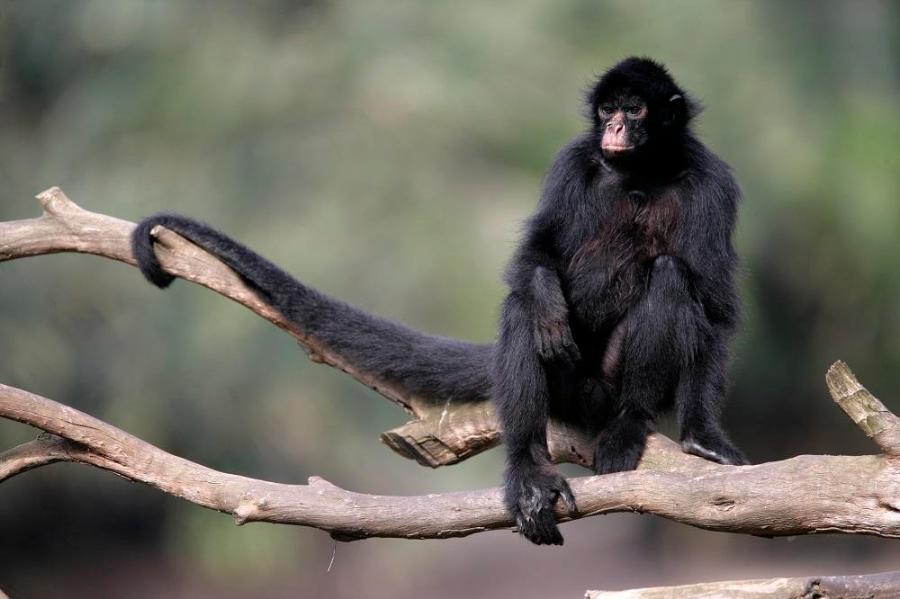
The coccyx is an example of a common human exaptation that every person has. Located at the lower end of the spine, it represents the rudimentary remains of a tail. The united rudimentary vertebrae of our ancestors’ tail skeleton form the triangle bone. The tail enabled them to ascend efficiently while keeping their equilibrium.
We humans, as embryos in the womb, have a tail for a brief period of our existence. Initiated by our own bodies, cell death causes its demise after the sixth week of embryonic development. It’s possible that the muscles that comprise our pelvic floor need this kind of back-and-forth movement to mature properly.
When walking upright, humans and great apes rely on the muscles that formerly controlled the tail’s movement. The major gluteal muscle, the gluteus maximus, now attaches to the coccyx. The muscle of the sphincter at the back of the throat is likewise fixed in place by this. That’s why the coccyx isn’t just there for show; it’s also here to help us out as an exaptation that evolved through time.
Nictitating membrane: Covert defense
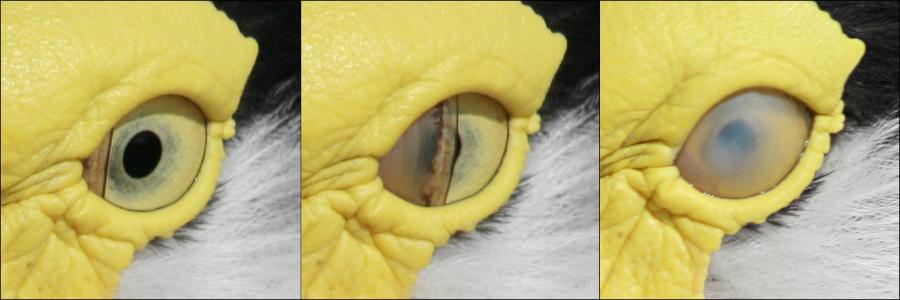
(Image: Toby Hudson – CC-BY-SA 3.0
The nictitating membrane’s rudimentary remains are another exaptation that sees continued use in the contemporary world. Some animals can see while covering one eye with their translucent third eyelid, called the nictitating membrane. It disinfects, nourishes, and protects the eye area. We only have a plica semilunaris, a rudimentary form of the nictitating membrane, left in our eyes now. In a mirror, this conjunctival fold appears as a pink structure in the inner corner of the eye. Although the nictitating membrane was lost to evolution, its function remains unclear.
Instead, the plica semilunaris gives us dependable assistance. It’s a part of the process of eliminating debris from the eye. Instinctively, if a stray eyelash enters the eye, we will both blink and roll the eyeball inward, toward the plica semilunaris, where it will be out of harm’s way. In such a case, the eyelash won’t cause any irritation to the surrounding tissue, and we may simply pull it out with our fingers.
Pointy canines: Designed for rending flesh
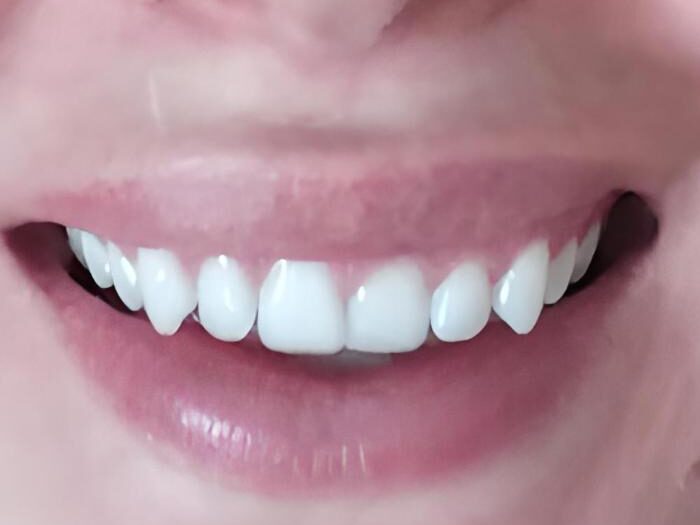
Our pointed canines are another example of exaptation in the human body. The tusks of male monkeys are used in courtship displays to impress possible partners. About two million years ago, the purpose of the pointed canines in humans began to decline. As an alternative, we use them for slicing through meat and other dense foods. Their incisor-like form and deep roots make them ideal for this task.
Nonetheless, it’s unlikely that this form evolved for the sole purpose of being consumed. As a practical matter, it was more of a side effect. The evolution of the human face necessitated a different form for the canine tooth, which is why it now looks the way it does. They are likely in their current form as a result of the shortness of their cranial overbite and the separation of their jaw joints at the skull’s base. In any case, they make great bites.
Body hair: Gone due to savannah heat
It’s also possible to find rudiments that are neutral in their effects. They won’t hurt you, but they also won’t assist you in the modern world. Our hair is one of them. Our hair follicles are rather rudimentary. Head hair and sexual hair (beard, pubic, and armpit hair) are the only exceptions. The hair on the rest of your body is a remnant of the fur coats our ancestors wore. But it did more than just keep them toasty; it also shielded them from the sun. Heavy fur may deflect up to 50 percent of the sun’s rays.
The density of the fur on primates varies with their body size. It is the little primates, not the giant ones, who have the thickest fur. Because of their small stature, even the australopithecines, the ancestors of humans, likely wore a thin layer of fur. When forests were replaced by savannahs, the animals’ remaining fur was no longer effective in keeping them cool. When sweating became the primary means of thermoregulation, the remaining fur became unnecessary and rudimentary.
Ear muscles: Twitching, wiggling and turning
Our rudimentary ear muscles are the same way. A dog or cat will perk its ears if it hears anything interesting. But we humans and great apes have lost that skill. Instead, they adjust their focus to look in the right place. The muscles that used to move the ear are still there, but they have significantly atrophied.
In their transition from nocturnal prosimians to diurnal primates, our ancestors likely lost the capacity to rotate their auricles. Although this occurred quite some time ago, its impact may still be felt today. To this day, the human ear still twitches reflexively in response to a startling noise. Some individuals even have enough powerful minute muscles to “wiggle” their ears.
Ancestral reflexes that are still around
Though unused body parts return to their rudimentary states rather quickly, the accompanying behaviors take much longer to catch up. As a consequence, we retain responses like the grabbing reflex and goosebumps despite the fact that they have no clear use in the contemporary environment.
Organs for making noise
Numerous instances may be found in the animal world of behaviors that have lost their evolutionary role yet continue to exist. The rattlesnake species Crotalus catalinensis, for instance, has lost its rattling organ via regressive evolution but still uses tail-flicking to warn of danger. Teleogryllus oceanicus, or the oceanic field cricket, has changed its wings such that certain populations are unable to chirp. Still, they keep on swaying them as if making music with them.
Why do these dysfunctional patterns last so much longer than their natural analogs? It takes a lot of energy to create and maintain organs, so it would make sense for organisms to quickly get rid of them when they are no longer needed. However, maladaptive habits need very little energy to maintain. In addition, there is a lot more diversity in behavior than there is in organ structure. Therefore, it is more difficult to completely stifle their expression.
Gripping reflex of babies

In addition to more complex cognitive abilities, humans retain a store of reflexes and other primitive behavioral patterns. For example, if you touch a baby’s palm between the ring and index fingers, the baby will reflexively shut its hand. For the first four months following birth, this clutching reflex is active. A remnant from our primate ancestors. The purpose of this response was probably to make sure the baby always clung to the mother’s fur while she carried it. The need for the gripping response has diminished since human mothers stopped producing fur. However, a newborn human’s grasp is so powerful that it could support the baby’s weight.
Goosebumps: From cold protection to pleasant showers
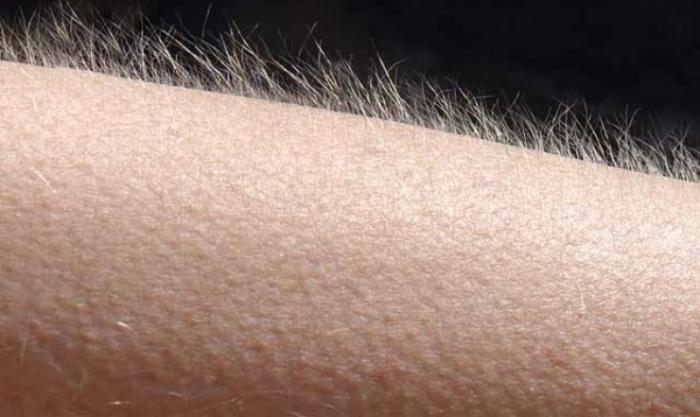
The occurrence of goosebumps is likewise a rudimentary reaction that has no practical use in the modern human body. When the muscles in your hair follicles tighten, your hair will stand on end and give you goosebumps. The bristling of our ancestors’ fur had a dual purpose: In the first place, the standing hairs served to trap heat, protecting the wearer from the chilly air. Secondly, the raised hair made the primates seem bigger, which may have deterred predators.
While the goosebumps we experience in response to cold or fear are less pronounced in modern ancestors because of our less body hair than they were in the past, they still occur. But in the twenty-first century, goosebumps could once again serve a purpose. Hearing excellent music, for example, may elicit similar responses in certain people. Every time we do this, chills go up and down our spines. Individuals around us may get more insight into our character from our standing hair.
Which human traits will regress in the future?
Discovering our roots and the history we share with those who came before us requires a journey into the past. But what do we learn by looking toward the far horizon? Is retrograde evolution making progress? Which traits of modern humans will be rudimentary years from now? Scientists continue to argue over competing visions of the Homo sapiens of the future.
A way of living unaffected by natural selection
However, the converse has also been considered. Human evolution may be over since our cultural, medical, and technological advancements have undercut the principles of natural selection. But modern calculations make the opposite assumption, that human evolution is occurring at a considerably faster rate than previously thought.
That’s in part because of how well a large gene pool works for evolution in Homo sapiens. Our population has not only exploded in the last ten thousand years, but has also pushed over the boundaries of the continents thanks to advances in transportation. Now more than ever, the potential for evolution and the number of possible genetic combinations are both enormous.
Loss of teeth
However, it is also true that the way we live now affects the future trajectory of development. It’s useful for figuring out which traits could revert to rudiments throughout the centuries. It’s thought, for instance, that the development of wisdom teeth, which is still quite rudimentary, may stop altogether in the not-too-distant future. At present, 35% of the population does not have any wisdom teeth, and this tendency may continue.
U.S. anthropologist Harry Shapiro likewise believed that humans’ teeth may evolve weaker and less resistant. This would allow it to adjust much more readily to the present diet of processed, low-chewing meals. Alterations can include reduced jaw size and decreased tooth size.
Say your goodbyes to your tiny toes
Regressive evolution may also have an effect on our feet. People may have weaker feet and flattened arches if they sit for long periods of time instead of walking. There is a risk that the little toe may atrophy over time and cease to function as an independent unit. This is because the ball of the foot sits directly above the second toe, with the big toe acting as a pivot point.
The toes become less important for balance when the body’s weight shifts closer to the little toe. As a result, the little toe plays a secondary role in walking. For others, the little toe has already shrunk to an almost insignificant size, and the nail has frequently withered away to nothing.
Future and history fused
However, exact predictions of evolutionary outcomes are now impossible. The study of human evolution is not a precise science since it relies on inference, speculation, and guesswork. However, it fascinates us to think that our distant ancestors could not have had any need for some portions of the human body that we now take for granted. This concept helps us become more attuned to the reality that nothing is permanent, and that our bodies are both artifacts from the past and potential heirlooms for the future.



